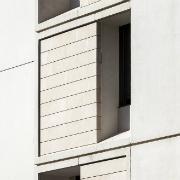Plan for Linking the University and the Community
From an architectural point of view the University’s connections with the community have two main aspects: Bringing the community to the campus through the use of its facilities and visiting its buildings and landscaped areas, and directing the campus facilities to the city
The University takes part in cultural life in Israel and encourages the general public to participate in a variety of activities. Listeners may attend free lectures in a range of subjects, such as literature, philosophy, history, art, medicine and life sciences – within the framework of the curricula of various faculties. People may also visit a series of lectures sponsored by the rector, which is promoted each semester on a different subject with the best lecturers from Tel Aviv University as well as guest lecturers; the series is open to faculty, students and the general public.
Community activity, which is defined as one of the University’s goals, developed over the years as part of the organic units. The activity is supposed to be run and coordinated by the academic units in the faculties, and in their facilities. But there is certainly room for new construction by entities that offer community services outside of the faculties, for example, activities for Science-Oriented Youth at the "Youth University" or activities for adults, especially from the periphery, through the "Access for All" program.
A partial list of the activities illustrates the variety and types of offerings at the University, which invites the public to participate and make use of the campus facilities:
- Nature campus - part of adult external studies
- Tel Aviv University for youth
- Access for All - adult education
- Genia Schreiber University Art Gallery
- Enrichment studies with the Yolanda and David Katz Faculty of the Arts
- Film and Acting Department (plays open to the public)
- Cymbalista Synagogue and Jewish Heritage Center
- Legal clinics
- Citizen’s Empowerment Center in Israel
- Research cadets
- Dental clinics
- Student union activities at the Eric Mitchell Student Center
- Activities at Beit Hatfutsot and the Museum of the Jewish People
Architectural aspects
From an architectural perspective the connections between the University and the community feature two main aspects:
- Bringing the community to the campus through the use of its facilities and visiting its buildings and landscaped areas. Designing the campus must take into account the variety of activities that take place at the University in conjunction with the community - residents of the city and the neighborhoods surrounding the campus, visitors – in fact anyone who is not a student, faculty member or University employee. These are people who do not come as part of an obligation or duty to attain some sort of degree or profession, or as part of their job, but rather in a framework that is closer to recreation and a desire for enjoyment. The facilities that house these activities must be accessible, attractive and built so that the public will be interested in coming and will enjoy using them, and as a result the students and faculty will also benefit. If we tend to emphasize the importance of the "public space", then in the case of the public using the campus facilities this space, or actually the expression of this, becomes doubly important.
- Directing the campus facilities to the city: Creating a built-up or landscaped wall to create an urban street that offers uses that serve people at the University and residents of the city and the neighborhood – as was done at the time at Sally and Lester Entin Square. The emphasis in this case is on developing Chaim Levanon Street. Today there is a fence that separates the street from the campus along nearly its entire length, except for the area of Sally and Lester Entin Square, the area of the Broshim dormitories and some of the Einstein dorms. Instead of a fence we have planned "fence buildings" whose façades will be commercial space with stores, cafés, restaurants and other services such as clinics, salons, Cinematheque theaters and the like. Intelligent planning, and designing the street in addition to all of the activities to be included there, will create a unique urban experience.





